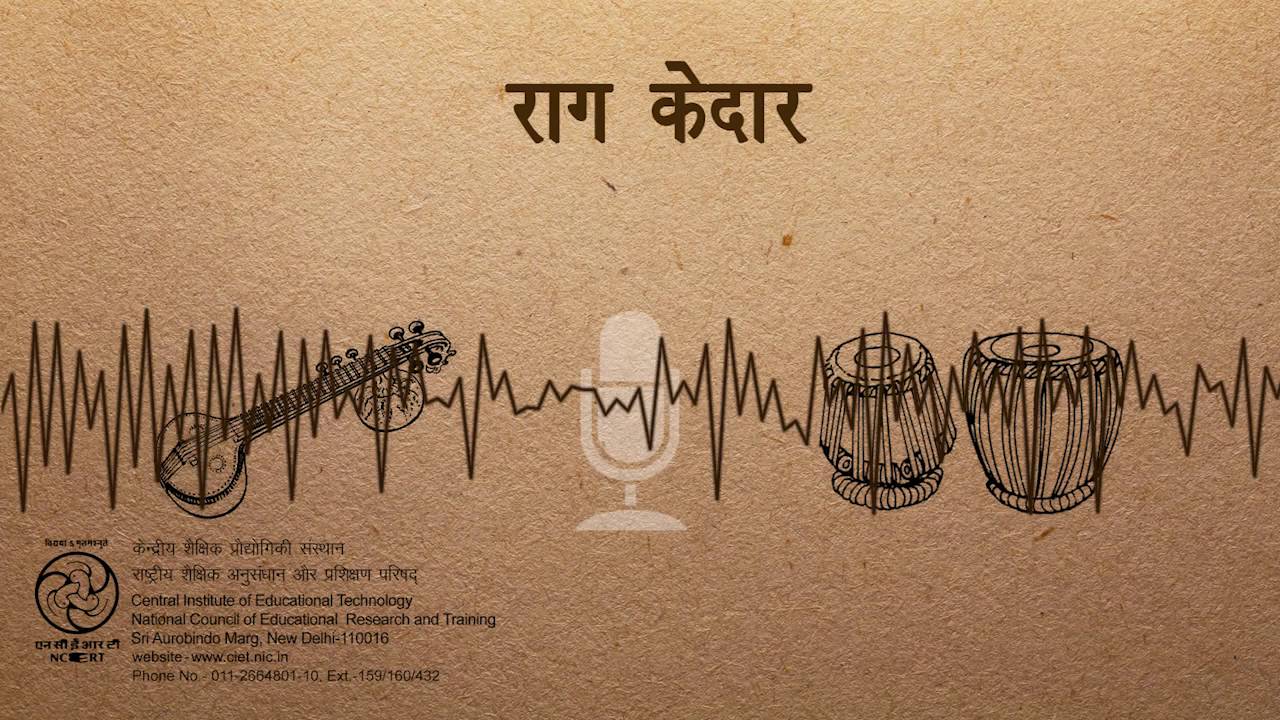उस्ताद राशिद खान ~ राग केदार
उस्ताद राशिद खान ने अगस्त 1995 में लंदन के सेंट जॉन स्मिथ स्क्वायर में समा आर्ट्स एंड नवरस रिकॉर्ड्स के लिए उनके संगीत कार्यक्रम का एक अंश राग केदार में हमेशा लोकप्रिय ध्रुव बंदिश गाया। राशिद खान के साथ आनंद गोपाल बंदोपाध्याय (तबला) और ज्योति गुहो (तबला) हैं। हारमोनियम)। यह सोनी म्यूजिक के तहत सभी प्रमुख डिजिटल वितरण प्लेटफॉर्म पर उपलब्ध नवरस एल्बम (एनआरसीडी 0071) का एक अंश है।
Ustad Rashid Khan sings the ever popular Dhrut Bandish in Raga Kedar - an excerpt from his concert for Sama Arts & Navras Records at London's St. John Smith's Square, in August 1995. Accompanying Rashid Khan are Anand Gpoal Bandopadhyaya (Tabla) and Jyoti Guho (Harmonium). This is an excerpt from the Navras album (NRCD 0071) available on all major digital distribution platforms under Sony Music.
Song
Shahana - Ektal
Artist
Ustad Rashid Khan
Album
Ustad Rashid Khan
Licensed to YouTube by
The Orchard Music (on behalf of Navras Records), and 1 music rights societies
- Log in to post comments
- 76 views
संबंधित राग परिचय
Kedar
Raga Kedar, also known as Kedara, is a Hindustani classical raga. Named after Lord Shiva, the raga occupies a high pedestal in Indian classical music. It is characterised by many melodious turns. This raga is the repetition of the swaras सा and म. It is generally accepted that it displays much thermal energy and is regarded as the Raagini of Raag Deepak. While preceding from Shuddha Madhyam (m) to Pancham (P), a touch of Gandhar (G) or a smooth passage from Gandhar (G) to Pancham (P) expressed as m G P is the more common way of instant raga manifestation
Origin
The raga emerges from the Kalyan taat. This raga is named after Lord Shiva and is loved by Lord Krishna. Lord Krishna played this raga on his flute and everyone in Gokul was mesmerized.
Technical description
The raga is of shaadava-sampurna nature, i.e., in its arohana (ascent), only six notes are used, and in avarohana (descent), all seven notes are used. In general, the progression of the raga is highly non-linear, which makes it difficult to capture its essence using arohana and avarohana.
The raga uses only natural (shuddha) versions of the Second (R), Third (G) and Sixth (D), both natural and sharp (tivra) versions of the Fourth (m and M, respectively "( m- tivra, M- shuddh)" and predominantly natural versions of the Seventh (N) but occasionally also its flat (komal) version (n). ( m- tivra, M- shuddh) "both natural and sharp" (tivra) versions of the Fourth (m and M, respectively)
Arohana: S M, M'P D M , D N S`
Avarohana: S' N D P, m P D P M~ , S R S
Pakad: S M, M P, m P m P, D P M, R S
The notes of the raga are s r g m (m is tivra) p d n s.
The most prominent (vadi) note is m, and the second most prominent (samvadi) is S.
Samay
The raga is to be sung at night. It is sung in the first prahar of night. Most ragas with teevra ma (M) are sung at night (as per the time theory of ragas).
Further information
The meend from D to M via P is the heart of the raga. This phrase is repeated again and again. The G is used as a grace note in the transition from m to P. The movements in the raga from one swara to another are complicated, and the extent of use of the different swaras often depends on the singer. Kedar is one of five ragas that form the Kalyan Panchak or Panchya with Hameer, Gaud Sarang, Kamod, Chhayanat and Kedar. Kedar is an ancient raga, with different genres of classical songs, like khayals, thumris, dhrupads, as well as light classical songs based on it.
According to the Guru Granth Sahib, raga Kedara (ਕੇਦਾਰਾ) expresses and makes the mind aware of the soul's true character. It conveys the emotions of honesty, integrity and truthfulness in a practical and caring way. This approach is memorable, so that the mind is made aware, without arousing cynicism.
Variants
- Adambari Kedar
- Anandi Kedar
- Basanti Kedar
- Chandni Kedar
- Deepak Kedar
- Jaladhar Kedar
- Kedar Bahar
- Kedari Malhar
- Maluha Kedar
- Nat Kedar
- Shuddha Kedar
- Shyam Kedar
- Tilak Kedar
रात्रि के प्रथम प्रहर में गाई जाने वाली यह रागिनी करुणा रस से परिपूर्ण तथा बहुत मधुर है। इस राग में उष्ण्ता का गुण है इसलिये यह दीपक की रागिनी मानी जाती है। कुछ विद्वान इस राग के अवरोह में गंधार का प्रयोग न करके इसे औढव-षाढव मानते हैं। गंधार का अल्प प्रयोग करने से राग की मिठास और सुन्दरता बढती है। गंधार का अल्प प्रयोग मध्यम को वक्र करके अथवा मींड के साथ किया जाता है, जैसे - सा म ग प; म् प ध प ; म ग रे सा। इस अल्प प्रयोग को छोडकर अन्यथा म् प ध प ; म म रे सा ऐसे किया जाता है।
मध्यम स्वर से उठाव करते समय मध्यम तीव्र का प्रयोग किया जाता है यथा - म् प ध प ; म् प ध नि सा'; म् प ध प सा'; इस प्रकार पंचम से सीधे तार सप्तक के सा तक पहुंचा जाता है। अवरोह में निषाद का प्रयोग अपेक्षाक्रुत कम किया जाता है जैसे - सा' रे' सा' सा' ध ध प। मध्यम शुद्ध की अधिकता के कारण षड्ज मध्यम भाव के प्रयोग में निषाद कोमल का प्रयोग राग सौन्दर्य के लिये अल्प मात्रा में किया जाता है जैसे - म् प ध नि१ ध प म। दोनों मध्यम का प्रयोग साथ साथ करने से राग की सुंदरता बढती है। यह राग उत्तरांग प्रधान है।
थाट
राग जाति
गायन वादन समय
Tags
राग
- Log in to post comments
- 8409 views

